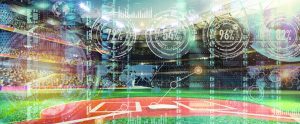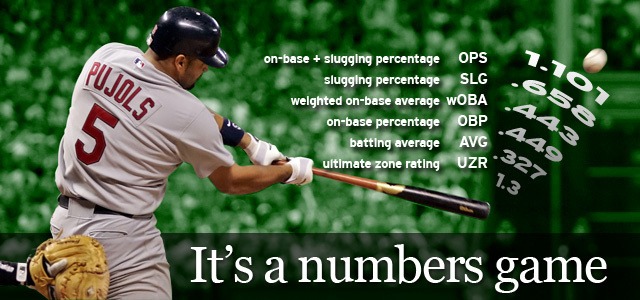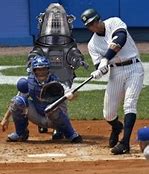Major League Baseball is going all-in on technology. And all the tech advancements are aimed directly at the shrinking MLB fan base. Improvements are pointed at speeding up the game, making play less subject to human (umpire) error but overall playing to the new younger wired generations.

Baseball has always been the sport most invested in statistics. Long before launch angle and cyber-metrics were around, baseball was a game of numbers. Baseball fans have always been big-time consumers of stats, all the stats, all the time. The new age of cyber-technology has created the potential for real-time delivery of those numbers and a deeper fan involvement in the numerical minutia of the game. Here’s look at some of the new technology innovations.
Introducing Statcast
Major League Baseball stepped into the cyber-metrics age when they partnered with Statcast.
“Statcast, a state-of-the-art tracking technology, is capable of gathering and displaying previously immeasurable aspects of the game. Statcast collects the data using a series of high-resolution optical cameras along with radar equipment that has been installed in all 30 Major League ballparks. The technology precisely tracks the location and movements of the ball and every player on the field at any given time.”
Statcast streaming real-time metrics app averages 30.8 million users a day during the baseball season and its average user is under 30. You can get launch angle on every bat on ball incident. Exit velocity off that bat – no problem. Have the radar gun on every pitch and even see how far that right fielder ran to make that diving catch. All of this in real-time.
In July, the Oakland Athletics offered a special broadcast with Statcast to fans who appreciate the game’s analytics. Like the Washington Redskins pre-season trail statistical experiment, the broadcast of the analytics filled game is on an alternate channel to the normal play-by-play. And like other such experiments the regular game saw a small decrease in viewer numbers but the stat-filled programming made up for the loss and added thousands of new viewers.
Several other Major League teams are preparing to do data-driven tests with full implementation for some franchises in the 2020 season.
Stat-Driven Streaming
Not only will stat-driven television viewing be available but mobile streaming services will offer the stat packages. You can sit in your living room or man cave, watch the game on your big screen, stream the stats on your phone and place your wagers on your tablet. The digital age has come to baseball, live in the ballpark, in the sports bar or in your living room. Streaming allows multiple ways to consume and use the available data in real-time.

Statistics are like bikinis – they show a lot but not everything. Lou Piniella
In-Dugout Streaming
Real-time stats for fans and bettors means the same data is available to the managers and coaches. Real-time tablet-received data is now in every dugout and bullpen. Want to know if the starter still has his stuff? Pitch count, velocity and breaking angle of a hurlers every pitch can be available to the coach before the catcher has thrown the ball back to the mound.
With baseball integrating challenges into the game, the ability of see a replay immediately is crucial to a manager.
One big concern with real-time replay in the dugout is that there could be pressure on MLB to expand what plays are reviewable. If a call can be seen to be wrong immediately, why not allow a challenge? It’s not clear what would happen if a manager were able to complain about a call with data to back up his kicking of sand.

The Rise of Robo-Umpires
Earlier this summer, the Robo-Ump debuted in the Atlantic League’s All-Star game. Analysis showed an improvement in the accuracy of balls and strikes called but no discernible decrease or increase in time per pitch. However, a supposedly infallible computer would certainly take a lot of the questioning, arguing, whining and ejections out of the game over called balls and strikes.
What isn’t clear is if an electronic umpire can call balls and strikes, why not other on-field calls. Stop-action replays are used in tennis to make or overrule line calls. That same technology could be used for fair or foul calls in baseball. How about those phantom double-play foot swipes at second base or a diving catch or no-catch in the outfield.

Where will it all end? Clearly we have not yet scratched the surface of what technology could do for baseball. How about a wireless touch glove for a first baseman and the same touch tech for the base. No more bang-bang plays at first base that always seem to go to the defense. Either the ball hits the glove before the shoe hits the base or it doesn’t. The base lights up green or red and the manager runs out on the field to argue with a computer.
Tim Lavalli holds a Ph.D. in psychology and has focused his work on the mental aspects of competitive games. He co-authored Check-Raising the Devil, the autobiography of poker pro Mike Matusow. You can follow him on Twitter @timlavalli.Â











